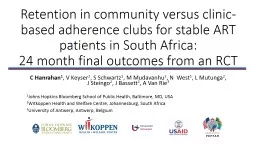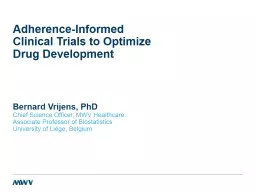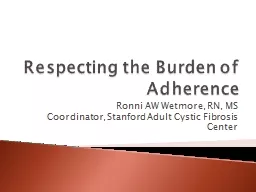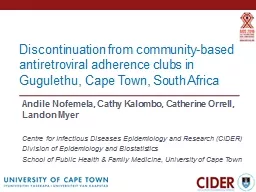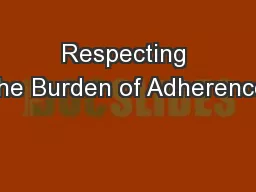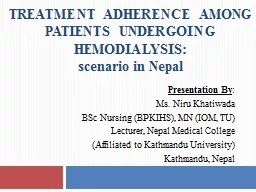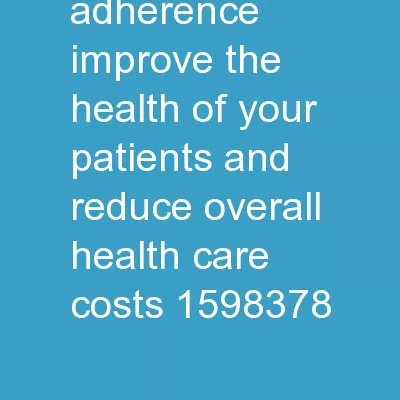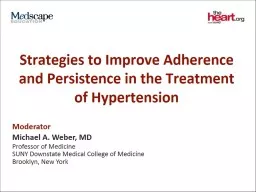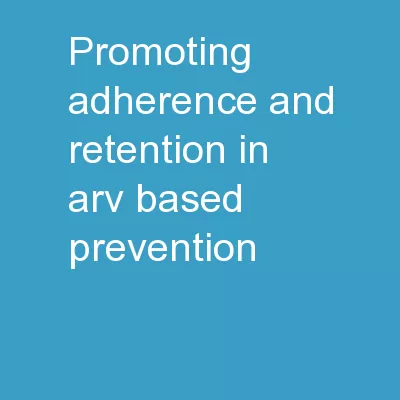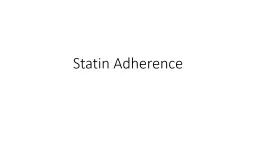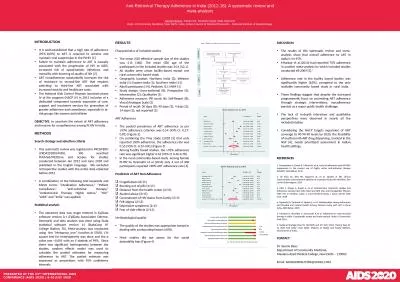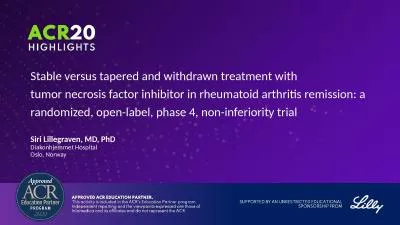PPT-R etention in community versus clinic-based adherence clubs for stable ART patients in
Author : luanne-stotts | Published Date : 2019-11-21
R etention in community versus clinicbased adherence clubs for stable ART patients in South Africa 24 month final outcomes from an RCT C Hanrahan 1 V Keyser 2
Presentation Embed Code
Download Presentation
Download Presentation The PPT/PDF document "R etention in community versus clinic-ba..." is the property of its rightful owner. Permission is granted to download and print the materials on this website for personal, non-commercial use only, and to display it on your personal computer provided you do not modify the materials and that you retain all copyright notices contained in the materials. By downloading content from our website, you accept the terms of this agreement.
R etention in community versus clinic-based adherence clubs for stable ART patients in: Transcript
Download Rules Of Document
"R etention in community versus clinic-based adherence clubs for stable ART patients in"The content belongs to its owner. You may download and print it for personal use, without modification, and keep all copyright notices. By downloading, you agree to these terms.
Related Documents

